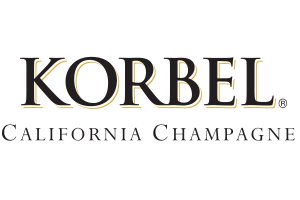Filter Search
Show available only
Categories
Price
Select all
Clear all
$0 - $10
$10 - $50
$50 - $100
$100 - $500
$500 & above
Filter Search
Show available only
Categories
Price
Select all
Clear all
$0 - $10
$10 - $50
$50 - $100
$100 - $500
$500 & above
Product is not availabe in this category, please select other category
ALL ABOUT CHAMPAGNE
Champagne launches pretty much any event, toast, and gatherings with a bang! Enjoying a great morning with friends? Make mimosas. Gathering all your loved ones together to celebrate that graduation, certification, or holiday? Make a punch and spike it with vodka and Champagne for a fruity, refreshing, bubbly libation that keeps people coming back for more. Champagne's subtle flavors mix seamlessly into many different drinks. Check out LiquorSplit’s Champagnes to find one that makes your next event the one that people talk about!

History
Champagne is a sparkling wine that is known for its elegance and sophistication, but its origins are humble and rooted in the region of Champagne, France. In the early days, the Champagne region was known for its still wines, which were highly prized by the French aristocracy. However, the wine was often difficult to transport because of the risk of spoilage during the long journey to Paris. To solve this problem, winemakers in Champagne began to experiment with creating a sparkling wine by adding sugar and yeast to the still wine, which produced a second fermentation and created bubbles in the bottle. By the 18th century, Champagne had become a favorite of royalty and high society, and the demand for the wine continued to grow. However, the production of Champagne was not without its challenges, including issues with inconsistent quality and exploding bottles. Over time, advances in technology and production methods helped to refine the process of making Champagne, and the wine became a symbol of luxury and celebration around the world. Today, Champagne is still made using traditional methods and is considered one of the finest and most exclusive wines in the world.
How Champagne is Made
The grapes used to make champagne are typically a blend of Chardonnay, Pinot Noir, and Pinot Meunier, and they are harvested by hand. The grapes are gently pressed to extract their juice, which is then fermented in stainless steel tanks. After fermentation, the base wines are blended to create the desired flavor profile. The blended wine is then mixed with a mixture of yeast and sugar, called the "liqueur de tirage," and the bottles are sealed with a crown cap. The wine is then stored horizontally in cool, dark cellars, where the secondary fermentation takes place. The yeast consumes the sugar, producing carbon dioxide, which is trapped in the bottle, creating the bubbles that champagne is known for. The champagne is aged in the bottle on its lees for a minimum of 15 months, and up to several years for vintage champagnes. During this time, the wine develops its unique flavor and aroma profile. After aging, the bottles are gradually turned and tilted, a process called "riddling," which causes the lees to settle in the neck of the bottle. The neck of the bottle is frozen, and the crown cap is removed, allowing the frozen lees to be expelled by the pressure of the carbon dioxide. The bottle is then topped up with a mixture of wine and sugar, called the "liqueur d'expédition," to balance the sweetness and acidity of the champagne. Finally, the bottle is corked and labeled, and then aged for an additional several months before it is ready to be sold and enjoyed.
Types of
- Rose - Vintners craft this sparkling pink variety by either mixing together red and white wine or leaving red grape peels in white wine while it’s fermenting.
- Blanc de Noirs - Only red grape varieties make their way into this variety, usually Pinot Noir and Pinot Meunier.
- Blanc de Blanc - This style gets made only with white grape varieties, usually Chardonnay.
WHAT DOES CHAMPAGNE TASTE LIKE?
Vintners mainly use mixtures of seven different types of grapes to create their flavor profiles: Arbane grapes don’t see much. They make up the rarest variety used because of their susceptibility to powdery mildew. They create rustic herbal flavors. Chardonnay grapes produce citrus, butter, and floral flavors. Pinot Blanc grapes create apple, peach flavors, and nutty tones that finish with mineral undertones. Pinot Gris grapes carry a high sugar content and add spicy flavors with notes of citrus, tropical fruit, and stone fruit. Pinot Meunier grapes produce sweet and citrus flavors that make excellent white wines. Petit Meslier grapes don’t produce large quantities, which means they don’t see as much use as other varieties. They bring out strong vegetal flavors and intense acidity Pinot Noir grapes create spicy cherry and strawberry tones. Due to these differences and winemaker’s personal preferences, many Champagnes taste quite different. The amount of sugars added to a wine also affects the sweetness drastically. Brut Nature Champagnes use miniscule (if any) amounts of sugar, while Doux Champagnes use over fifty grams! The key flavor pronounced in most champagne tastes light and refreshing. Common flavors include cherry, peach, cream, almonds, and toast. The more a wine ages, the more the flavors change and develop. Take a look at individual product descriptions to learn more about each Champagne LiquorSplit carries.
.jpg)
How to Drink Champagne
Experienced sommeliers recommend chilling Champagne to around 46-48°F before serving. You can leave it on ice, but many experts recommend leaving it in a cool, dark place like a cellar instead. Leaving Champagne in the fridge for too long can cause the cork to dry out due to a lack of humidity, which oxidizes the wine and alters flavors. Instead of keeping on ice after opening it, put it in the fridge as it warms up to help it get back to temperature. Be careful opening the bottle! The highly pressurized cork definitely comes out with a bang. Remove the extra covering to expose the muselet (wire cage) while keeping a firm thumb on top of the cork. Holding a napkin between your thumb and the cork can help keep it in place and ensure you don’t take the full brunt force of the incoming pop. Without pointing it at anyone, rotate the bottle until the cork comes out without letting it escape. Wines carry robust and lively aromas. Pour a little bit out and appreciate the smell before filling the glass the rest of the way, which gives the Champagne some time to aerate. Serve the Champagne into a large tulip flute or large wine glass to help it express itself fully. Pour your Champagne into the glass without tilting it to let the bubbles disperse. Pour it slowly without letting it foam over, and only fill about half of the glass. This helps the Champagne remain at the right temperature so that you can enjoy it the way the winemakers intended.
What Makes Champagne Popular?
People use Champagne to celebrate all kinds of occasions, which comes from the history behind it. Champagne gained notoriety and attention from many European nobles and aristocrats who loved the carbonated drink and often shared it at parties and big meals. The loud pop of an opening bottle rallies party goers and starts toasts that kick the whole party into high gear. Champagne tastes sweet on its own, but it also mixes exceptionally well into fruity drinks and has become a staple in brunches through mimosas. It contains ethanol, which causes feelings of happiness and euphoria, and also carries phenylethylamine (PEA), the chemical people naturally produce when they fall in love. From a celebratory and even chemical standpoint, Champagne makes every celebration better.
LIQUORSPLIT’S FAVORITE CHAMPAGNE



.jpg)
Please select your delivery location for us to get the order deliver faster.
Home
Cart
Profile
Location
